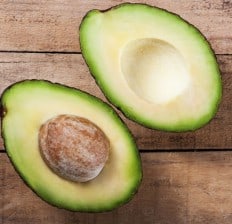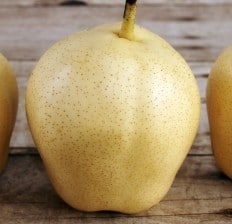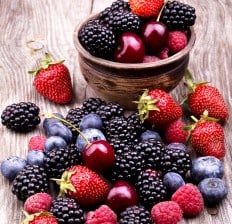Adding Fiber to Your Diet
Fruit does not feed candida and why excess fat does.
That’s scary, but the remedy is simple: treat your Candida yeast overgrowth and go eat an apple! You’ll be glad you did.
One of the most important elements of a healthy diet, after eliminating sugar is adding fiber.
Fruit does not feed candida and why excess fat does.
That’s scary, but the remedy is simple: treat your Candida yeast overgrowth and go eat an apple! You’ll be glad you did.
One of the most important elements of a healthy diet, after eliminating sugar is adding fiber.
That’s scary, but the remedy is simple: treat your Candida yeast overgrowth and go eat an apple! You’ll be glad you did.
One of the most important elements of a healthy diet, after eliminating sugar is adding fiber.
Why is adding fiber such a big deal if you want to boost your Candida treatment?
Once you have managed to get your Candida under control, adding fiber to your diet is one of the best ways to help your microbiome recover.
Fiber is a pre-biotic, which feeds the good “probiotics” in your gut.
Once you have managed to get your Candida under control, adding fiber to your diet is one of the best ways to help your microbiome recover.
Fiber is a pre-biotic, which feeds the good “probiotics” in your gut.
 |
| Add caption |
Perhaps you heard your grandmother or great grandmother encourage you to eat “roughage”.
Fiber is the part of grain that cannot be digested. It is found in all vegetables, fruits, especially the skins and the bran in whole grains.
If your diet is currently pretty low in fiber, add it back in gradually: too much may lead to gas and bloating and cause you to give up before you reap the benefits.
Eating a fiber-rich diet, may be the most important one of all: the health of our microbiome.
Perhaps you heard your grandmother or great grandmother encourage you to eat “roughage”.
Fiber is the part of grain that cannot be digested. It is found in all vegetables, fruits, especially the skins and the bran in whole grains.
If your diet is currently pretty low in fiber, add it back in gradually: too much may lead to gas and bloating and cause you to give up before you reap the benefits.
Eating a fiber-rich diet, may be the most important one of all: the health of our microbiome.
The “microbiome” is the community of gut microbes that, in a healthy person, protects us against “bad bacteria”, breaks down and digests food to make nutrients available and release energy, and produces vitamins.
The “microbiome” is the community of gut microbes that, in a healthy person, protects us against “bad bacteria”, breaks down and digests food to make nutrients available and release energy, and produces vitamins.
When the microbiome is compromised—as is the case with Candida overgrowth—it creates gut dysbiosis or imbalance.
This makes us more susceptible to disease, gastrointestinal disorders, and can even lead to autoimmune disorders like inflammatory bowel disease and chronic fatigue syndrome.

Add caption
When you switch to a high-fiber/low-fat diet, changes in the microbiome can be detected within three days.
We are losing gut microbiome by consuming a lowfiber/high simple-sugar diet, which will eventually impact longevity and ability to fight disease.
Wheatgrass
is a source of potassium, dietary fiber, vitamin A, vitamin C, vitamin E (alpha tocopherol), vitamin K, thiamin, riboflavin, niacin, vitamin B6, pantothenic acid, iron, zinc, copper, manganese and selenium.
Wheatgrass is also a source of protein.
| Add caption |
When you switch to a high-fiber/low-fat diet, changes in the microbiome can be detected within three days.
We are losing gut microbiome by consuming a lowfiber/high simple-sugar diet, which will eventually impact longevity and ability to fight disease.
Wheatgrass
is a source of potassium, dietary fiber, vitamin A, vitamin C, vitamin E (alpha tocopherol), vitamin K, thiamin, riboflavin, niacin, vitamin B6, pantothenic acid, iron, zinc, copper, manganese and selenium.
Wheatgrass is also a source of protein.
HIGH FIBER FOODS
Recommended Daily Fiber:
Women 25 grams
Men 35-40 grams
Recommended Daily Fiber:
Women 25 grams
Men 35-40 grams

1. Avocados
Total Dietary Fiber: 10.5 grams per cup (sliced)
Notable Nutrients: Vitamin C, Vitamin E, Vitamin B6, Folate, Vitamin K, Potassium
The fiber content of avocados varies depending on the type. There is a difference in fiber content and makeup between the between the bright green, smooth skinned avocados (Florida avocados) and the smaller darker and dimpled variety (California avocados). Florida avocados have significantly more insoluble fiber than California avocados. In addition to the fiber, avocados are packed with healthy fats that help to lower cholesterol and reduce the risk of heart disease. Start incorporating fresh avocado into your diet with some of these avocado recipes.


2. Asian Pears
Total Dietary Fiber: 9.9 grams of fiber per medium fruit, skin on.
Notable Nutrients: Vitamin C, Vitamin K, Omega 6 fatty acids, Potassium
Crisp, sweet, and delicious, Asian Pears contain high levels of fiber, but also is rich in Omega-6 fatty acids (149 mg per serving) associated with healthy cells, brain and nerve function.(1) The American Heart Association recommends at least 5%-10% of food calories come from Omega 6 fatty acid foods.



Comments
Post a Comment